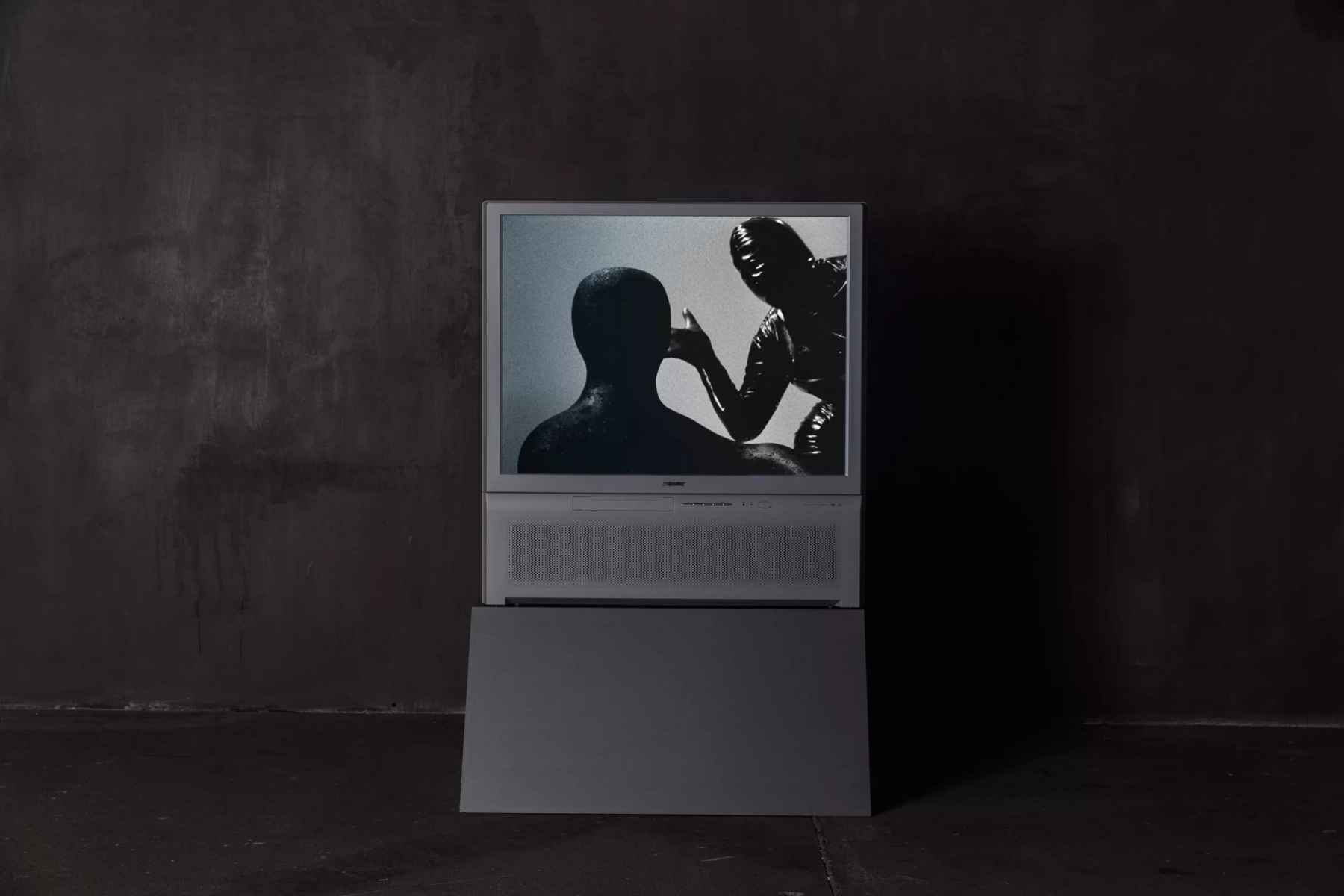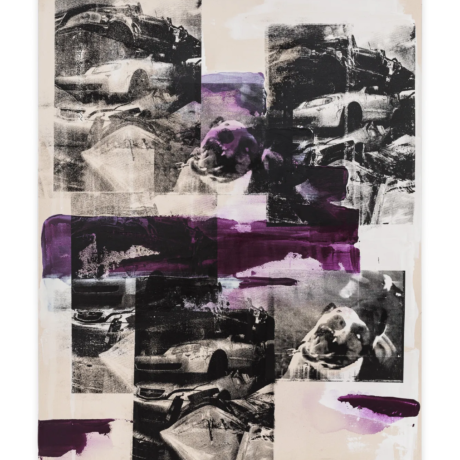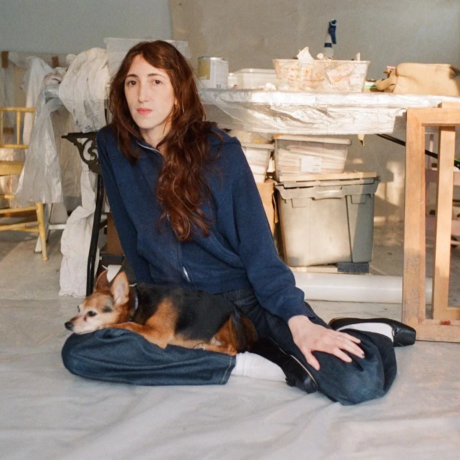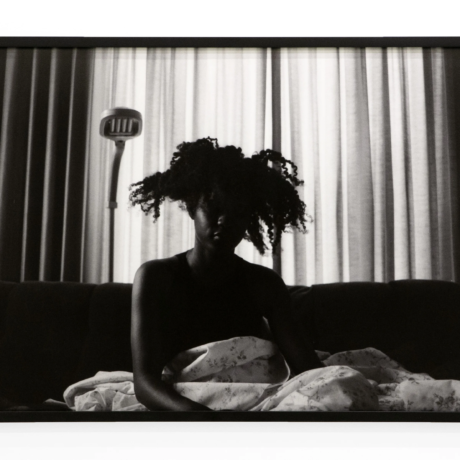Elephant writer Bella Butler reviews Brazilian artist Luiz Roque’s current exhibition at the KW Institute for Contemporary art in Berlin, having spoken to the curator of the show, Léon Kruijswijk.

What does it mean to be ‘modern’? In the art world, the word is often associated with the shift that occurred in the latter half of the nineteenth century, a rebellion in style, philosophy, and aesthetic ideologies. It is a word that aestheticizes time, making history not only one of a successive build up of years, nations, and peoples, but a timeline of style, of artistic expression. Modernity is also, importantly, defined spatially by direction. Modern is forward, progressive, innovation.
However, ‘modernity’, despite its radical intentions, has had considerable constraints and boundaries of its own. Modernity is relative and it is not open ended.

Multimedia artist Luiz Roque’s mid-career survey at the KW Institute for Contemporary Art is an exhibition that subtly but adamantly confronts the issue of the constraints of time and aesthetics. What does it mean for something to ‘fit’ seamlessly into a time period? Whose appearance, whose visual presence is celebrated in the world of art, aesthetics, and politics?
Luiz Roque, born in 1979 in Brazil, is an artist whose works challenge the classical art historical era of ‘modernity’ through his unwillingness to take the definitions of ‘form’ and ‘medium’ as they are. His current exhibition at the KW Institute in Berlin conveys his dedication to defying the confines of ‘time’ through the installation of nine of his videos/films alongside a collection of his more recent abstract ceramic sculptures.
Roque’s works that occupy the many winding rooms and basement of (part of) the institute’s buildings in Mitte, Berlin, is one which inescapably calls for an examination of the mediums and an interrogation of the concept of capital M, Medium, as there are only two mediums present: video/film and ceramics. As curator of the show Léon Kruijswijk explains to me, the artist’s foray into ceramics has only been in recent years, after being granted two separate residencies for ceramics, one in the Netherlands and one in Berlin, but when placed in the context of his earlier films, it is evident there is a clear marriage between the clay forms mounted on the walls and the videos looping beside them. From Kruijswijk’s experience of the installation design, the ceramics on the walls can be seen as companions to the film on “an associative and intuitive level.”
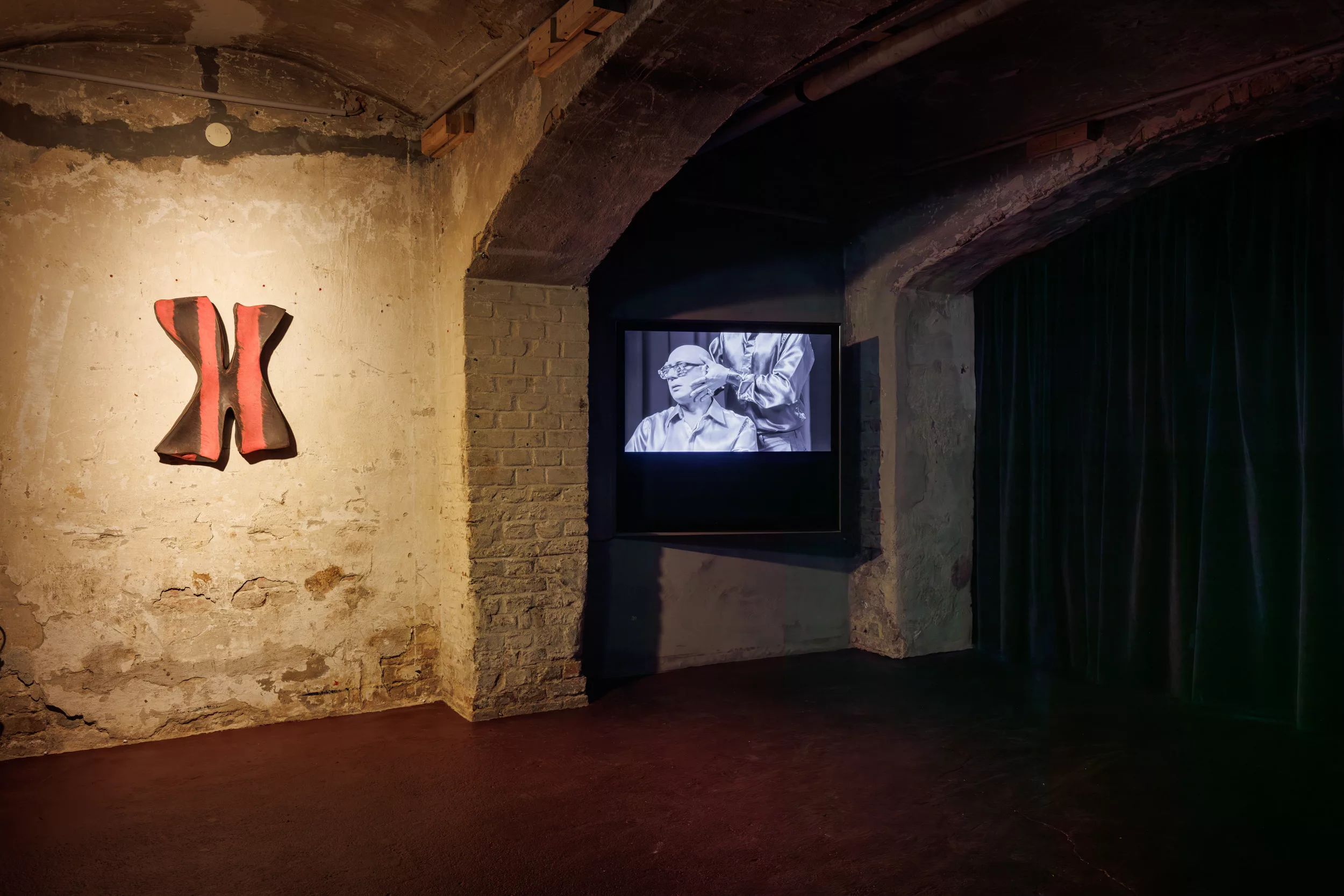
And it is true. It is hard to articulate the feeling produced by the clashing of forms, but it almost feels taboo, the bodily 3-dimensional ceramic ‘things’ on the wall confronting the 2-dimensional screen of moving images, trapped by the flatness of their medium. Each room is as if to ask the question: what happens now? What happens when we place unique, abstract clay—a form imprinted by the human body—directly next to the reproducible time-based medium of film? There’s no clear answer, but the outcome is the creation of an entirely new micro-world within the space of the gallery, defiant against traditional concepts of time and its relationship with what is aesthetically acceptable. Furthermore, Kruijswijk explains to me of Roque’s films themselves that they are “all their own temporality.”
In the first room of the exhibition viewers are met with Roque’s overt response to the idea of ‘modernity’ with his 2014 film Modern. The black and white film, shown on a 4:3 rear projection TV, is a kind of 4 minute meditation on modernity and portrays a dancer in a black latex bodysuit interacting with Henry Moore’s bronze sculpture Recumbent Figure (1938) in what is supposed to be one of the halls of the Tate Britain. According to the KW Institute, the dancer’s costume “references the extravagant Leigh Bowery, who was a key figure in the London club scene of the 1980s and 90s.” To strengthen this reference, the soundtrack to the film is an electronic and upbeat club song, its main driving beat akin to a deep heartbeat heard underwater. The video is not overbearing in its engagement with critical theory, but instead creates a visually inquisitive tone with the dancer’s provocative—but not aggressive–-movements towards the unmoving sculpture.
Modern puts an un-gendered, abstract, human form in conversation with a piece of modern art that stands firm in its historical canon, therefore urging a radical and de-forming approach to pre-existing forms that have previously solidified certain ideological attitudes toward art. The film makes the viewer squirmy, excited, confused, and hypnotised in thought—the trance-like effect in part due to the repetitive club music. As curator Kruijswijk eloquently explains of Roque’s film in question form, “what did modernism give us and what did it leave behind?”
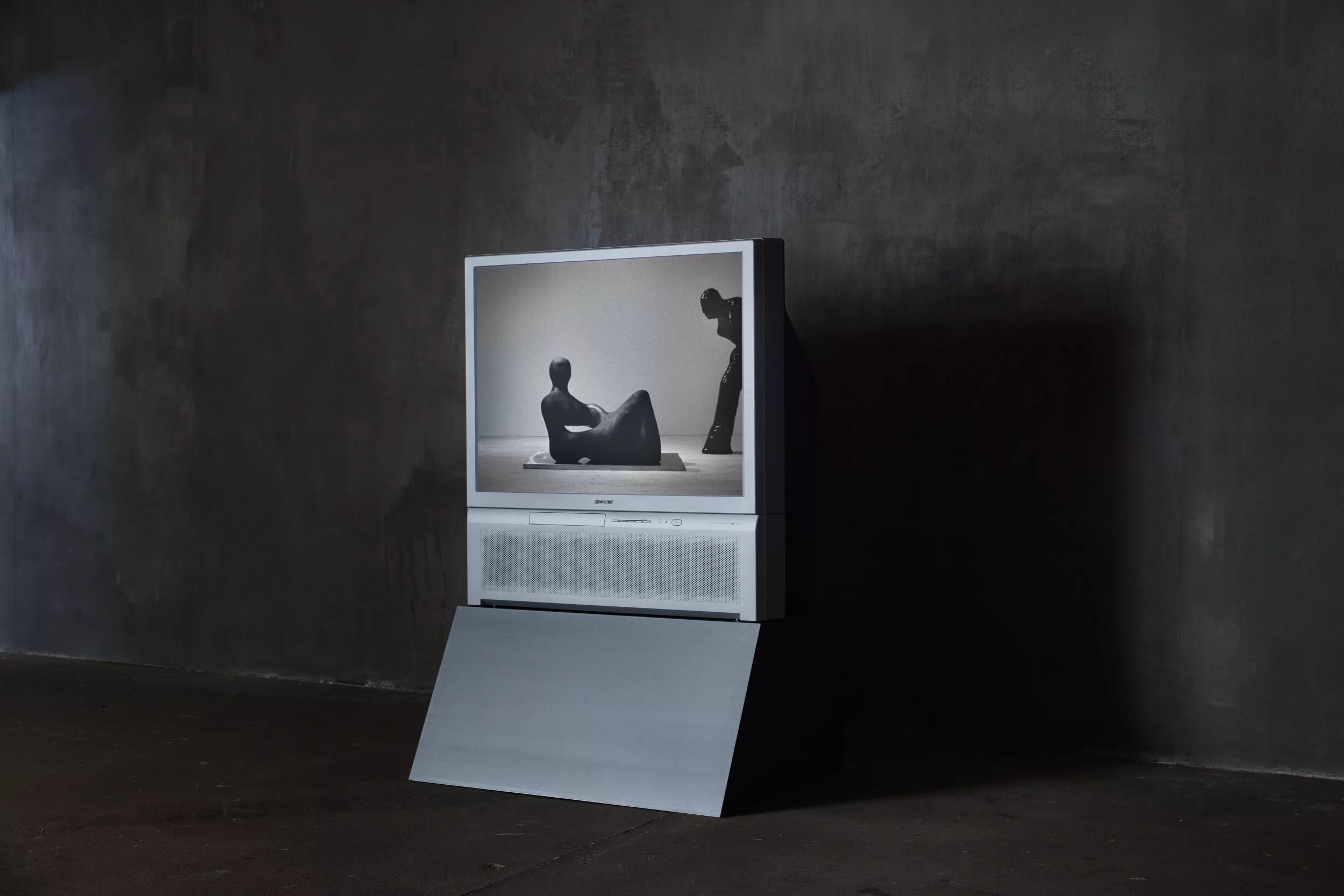
Well, if modernism gave us anything, it gave us a scaffolding on which to climb, hang upside down, and something to break (if we want to). Beginning with Modern provides a figurative tool kit for the rest of the exhibition, as it instills the viewer with the desire to engage with questions that Roque continually extrapolates upon, especially regarding form and content and its relation to temporalities. For example, in his film Ano Branco (White Year, 2013) he addresses the issue of ‘modernity’ or ‘progression’ in the context of queer biopolitics, when the protagonist, a trans woman, is forced to seek out her hormone treatment in an unidentifiable basement with a dystopian robot left to administer it. While the viewer is aware of the advancement of medical fields—the ability to administer hormones in the first place—they are also seeing a political regime’s ability to suppress, repress, and oppress those very advancements, an entirely oxymoronic definition of modernity. Made in a pre Bolsonaro era, the film is a kind of “visionary speculation,” says Kruijswijk. By the end of the film, the World Health Organization has removed gender identity disorders from the list of medical classifications.

But while many of his films have political messages or underpinnings, such as Estufa (20024 or Republica (2020), many of the films’ otherworldly nature and Roque’s “non-hierarchical approach to his subject matter,” seem to take us beyond the conventional bubbles of contemporary politics. Kruijswijk explains, “His protagonists are art objects, people and performers, animals and buildings,” which, in a way, ideologically catapults viewers into a realm that is about so much more than political jargon. They are about creating entirely new ways of imagining moving through the world, or better yet, the universe (why stick to earth?). Why limit ourselves to understanding the human form with regard to Earth’s forms — what power does form have when taken out of its recognizable environment?

Roque’s films and ceramic sculptures are an invitation to consider form and then leave it all behind. His ceramic sculptures are reminiscent of something turned inside out, of something raised to the value of art because the artist chose to spend time with forms often neglected. Looking at Liver Couture (2024), installed in the same room as Ano Branco (2013), you kind of want to: get weird. It is bodily, yet delicate in its material precarity, threatening any moment to drop its glazed clay form to the floor and crack. This little ‘liver’ on the wall reminds me of the ‘meditation’ component of his work, the exhibition reading, in part, as a meditation on form and specifically, on bodily form. Roque’s films especially, chock-full of costume and transformed physical appearances, remind us that the materials of the ‘fine arts’ are not the only canvases for modernity. Our bodies are too.
Estufa will be up at the KW Institute for Contemporary Art in Berlin until 20 October, 2024.
